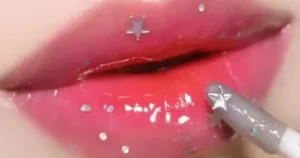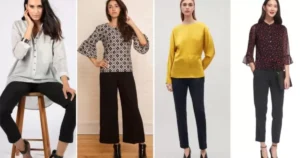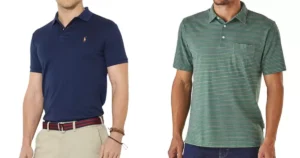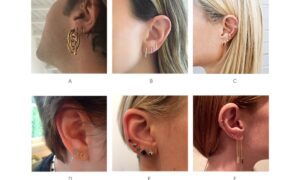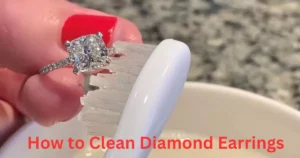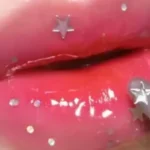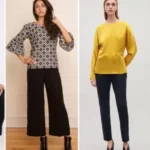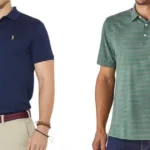Hair accessories are a fun way to style your locks, but it’s important to consider their potential impact on your tresses. One accessory that has made a major comeback in recent years is the claw clip. These clamps have regained popularity as a stylish and practical option for keeping hair out of your face. However, the question remains: are claw clips bad for your hair? Let’s explore this topic in depth.
Common Hair Accessories
Before diving into claw clips specifically, let’s take a look at some of the most common hair accessories:
Hair Ties (Scrunchies)
Hair ties, including scrunchies, are among the most widely used hair accessories. They come in various materials, such as fabric, silicone, and metal, and are used to secure ponytails, buns, and other updos. While convenient, some hair ties can cause breakage, especially if they’re too tight or made of materials that create excessive friction.
Headbands
Headbands are a versatile accessory that can be worn for both functional and stylish purposes. They come in different widths and materials, ranging from plastic to fabric and even metal. When used correctly, headbands can keep hair out of the face without causing much stress on the strands.
Hair Clips
Hair clips encompass a wide range of accessories, including bobby pins, barrettes, and of course, claw clips. These clips are designed to hold hair in place and can be used for various hairstyles.
Hair Clips vs Hair Ties
While hair ties and clips serve similar purposes, they can have different effects on your hair. Hair ties, especially those made of materials that grip tightly, can cause breakage and even traction alopecia (gradual hair loss) if worn too tightly or for extended periods. On the other hand, clips, like claw clips, distribute tension more evenly across the hair, potentially reducing the risk of breakage.
Why Are Claw Clips So Popular Again?
Claw clips experienced a resurgence in popularity in recent years, and there are a few reasons why:
- Nostalgia: For many, claw clips evoke a sense of nostalgia, reminiscent of hairstyles from the 90s and early 2000s.
- Practicality: Claw clips are incredibly convenient for quickly securing hair in an updo or half-up, half-down style.
- Versatility: These clips come in various sizes, colors, and designs, making them suitable for different hairstyles and personal styles.
- Minimalist Aesthetic: The sleek and minimalist design of claw clips aligns with current fashion trends favoring a more understated yet chic aesthetic.
Where Can You Buy Claw Clips?
Claw clips are widely available in various retail stores, both brick-and-mortar and online. Some popular places to find them include:
- Beauty supply stores
- Drugstores
- Department stores
- Online retailers (e.g., Amazon, Etsy)
- Specialty hair accessory stores
Claw Clips and Different Hair Types
The suitability of claw clips can vary depending on your hair type. Here’s a quick overview:
Claw Clip Hairstyles
Claw clips can be used to create a variety of hairstyles, including:
- Half-up, half-down styles
- Full updos (buns, twists, etc.)
- Securing loose hair at the nape of the neck
- Adding volume or height to updos
Avoid Damaging Your Hair With Claw Clips
While claw clips may be gentler than some hair ties, they can still cause damage if used improperly. Here are some tips to avoid hair damage:
- Avoid sleeping with claw clips: Wearing them overnight can cause unnecessary stress on your hair strands.
- Don’t over-tighten: Claw clips should be secure but not painfully tight.
- Use gentle clips: Look for claw clips with smooth, snag-free surfaces and rounded edges to minimize breakage.
- Distribute tension: When securing your hair with a claw clip, distribute the tension evenly across the hair rather than concentrating it in one area.
- Alternate hairstyles: Give your hair a break by alternating between different hairstyles and avoiding wearing claw clips every day.
Thinning Hair and Claw Clips
If you have thinning hair or are prone to hair loss, you may want to exercise caution when using claw clips. The tension and pressure from the clips could potentially exacerbate the issue. In such cases, it’s best to consult a hair professional for personalized advice.
Do hair claws damage hair?
The short answer is: it depends. Claw clips, like any hair accessory, have the potential to cause damage if used improperly or excessively. However, when used correctly and in moderation, claw clips are generally considered a safer option compared to tight hair ties or elastics.
Here are some factors that can contribute to hair damage from claw clips:
- Tension: If the claw clip is too tight or grips the hair too tightly, it can cause stress on the strands, leading to breakage and potentially traction alopecia (gradual hair loss) over time.
- Material: Claw clips made of harsh or sharp materials can snag and break hair strands. Look for clips with smooth, snag-free surfaces and rounded edges.
- Frequency of use: Wearing claw clips every day or for extended periods without giving your hair a break can increase the risk of damage.
- Hair type: Those with fine, fragile, or chemically-treated hair may be more susceptible to damage from claw clips or any hair accessory that applies tension.
To minimize the risk of damage, it’s important to use claw clips correctly and avoid over-tightening or wearing them for too long. Additionally, alternating between different hairstyles and giving your hair a break from accessories can help prevent excessive stress on the strands.
How are hair claws made?
Claw clips are typically made from a combination of materials, including:
- Plastic: The main body and claw components of the clip are often made from various types of plastic, such as acrylic, polypropylene, or polyethylene.
- Metal: The spring mechanism that allows the claw to open and close is usually made from metal, such as stainless steel or nickel-plated metal.
- Rubber or silicone: Some claw clips may have rubber or silicone coatings or pads on the teeth or interior surfaces to provide a better grip and reduce snagging.
- Decorative elements: Claw clips can also feature decorative elements like gemstones, pearls, or embellished designs, depending on the style and brand.
The manufacturing process typically involves molding the plastic components, assembling the metal spring mechanism, and potentially adding any decorative elements or coatings. Quality claw clips should be designed with smooth, snag-free surfaces and rounded edges to minimize hair damage.
Conclusion
While the resurgence of claw clips has brought a nostalgic and stylish hair accessory trend, it’s crucial to use them mindfully to prevent potential damage. Claw clips can be a safer alternative to tight, abrasive hair ties when used correctly. However, it’s essential to avoid over-tightening, choose gentle clips with smooth surfaces, and give your hair a break from accessories regularly. By following these best practices and being attentive to your hair’s needs, you can enjoy the convenience and versatility of claw clips without compromising the health and integrity of your strands. Ultimately, moderation and proper technique are key when incorporating any hair accessory into your routine, ensuring your tresses remain strong, healthy, and beautiful.

